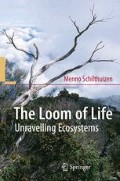I just bought myself an ecosystem. Even though the promotional babble on the website says it is actually ‘a work of art’ that is ‘carefully crafted to achieve an aesthetic, meditative beauty that can soothe any environment, including home, classroom or office’, to me it is primarily an ecosystem. Ecosphere Associates of Tucson, Arizona, USA, specialises in selling little worlds in a bottle. Their Original EcoSphere®. comes in various shapes and sizes. Mine is the ISS model: a clear glass sphere the size of a grapefruit, filled two thirds with seawater. Some gravel covers the bottom and a twig of dead coral provides a substrate for green algae. But the star attraction of the crystal ball is a dozen or so tiny red brine shrimp, nervously nibbling away at the algae.
The small sphere and its inhabitants may sound like a meagre sort of fishbowl for a price that could buy me a king-size fishtank with money to spare. But then EcoSphere is no ordinary aquarium. A spin-off from technology developed by NASA, the glass ball is completely isolated from the outside world. There is no way to feed the shrimp, prune the algae, or change the water. It is a self-contained ecosystem, running solely on the sunlight that flies through the glass wall and powers the photosynthesising chloroplasts in the algal cells. These split water into oxygen and hydrogen, sticking the hydrogen onto carbon dioxide molecules to build new algal tissues, and dumping the oxygen in the water. The shrimp breathe in the oxygen and eat the carbohydrates produced by the algae and in the process exhale water and new carbon dioxide for the algae to absorb. The waste products from this cycle, shrimp droppings and dead algal cells, are decomposed by bacteria in the water to provide nitrogen, phosphorus, and other nutrients for the algae. As a result, oxygen, carbon, hydrogen, and a whole bunch of other elements are continually pumped around the food cycles inside the sphere by the power of the sun. The process will not stop until all the shrimp (which do not reproduce) are dead. This, according to Ecosphere Associates, can take more than eight years.
Access this chapter
Tax calculation will be finalised at checkout
Purchases are for personal use only
Preview
Unable to display preview. Download preview PDF.
Rights and permissions
Copyright information
© 2008 Springer-Verlag Berlin Heidelberg
About this chapter
Cite this chapter
(2008). Life in Little Worlds. In: The Loom of Life. Springer, Berlin, Heidelberg. https://doi.org/10.1007/978-3-540-68058-1_1
Download citation
DOI: https://doi.org/10.1007/978-3-540-68058-1_1
Publisher Name: Springer, Berlin, Heidelberg
Print ISBN: 978-3-540-68051-2
Online ISBN: 978-3-540-68058-1
eBook Packages: Biomedical and Life SciencesBiomedical and Life Sciences (R0)

